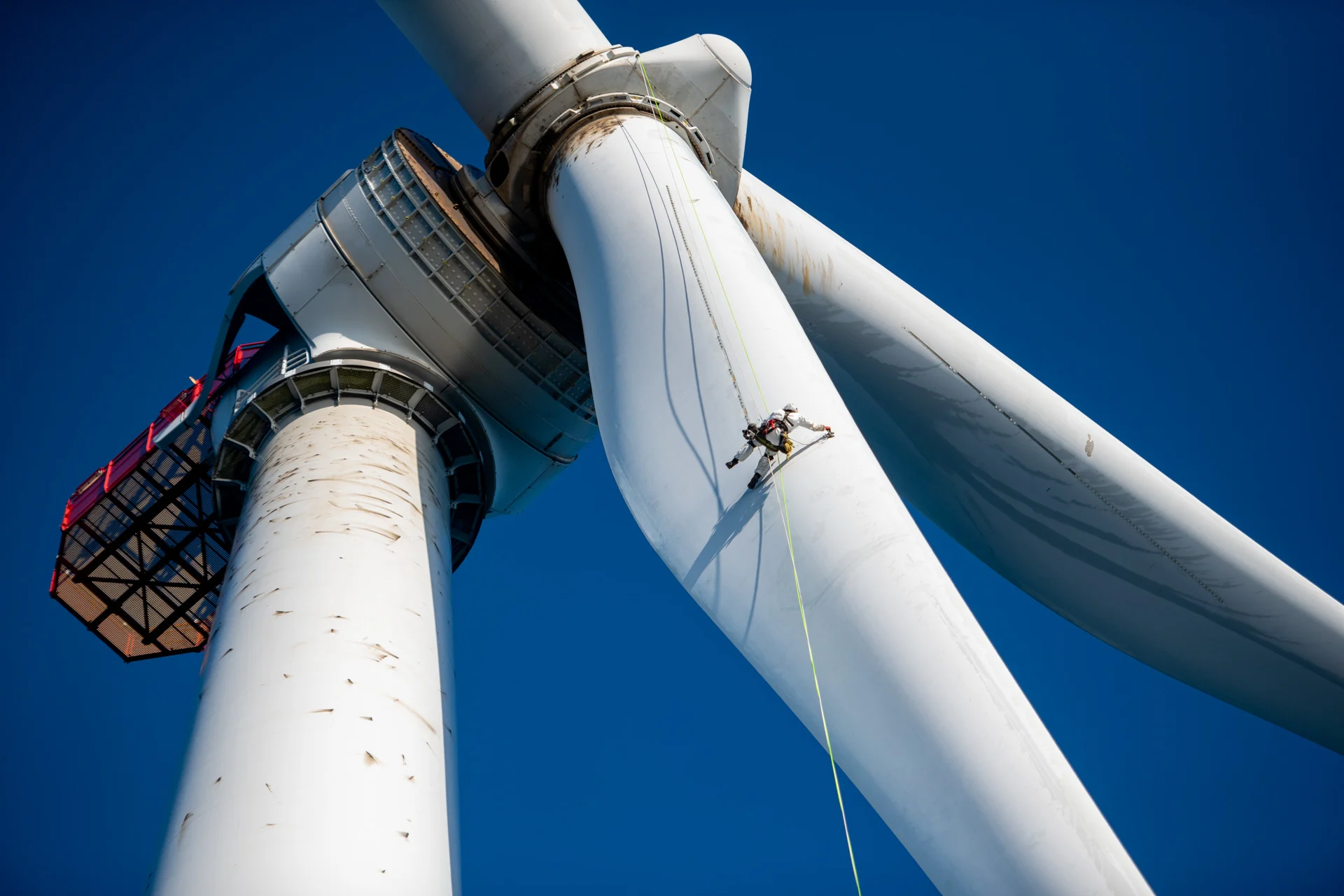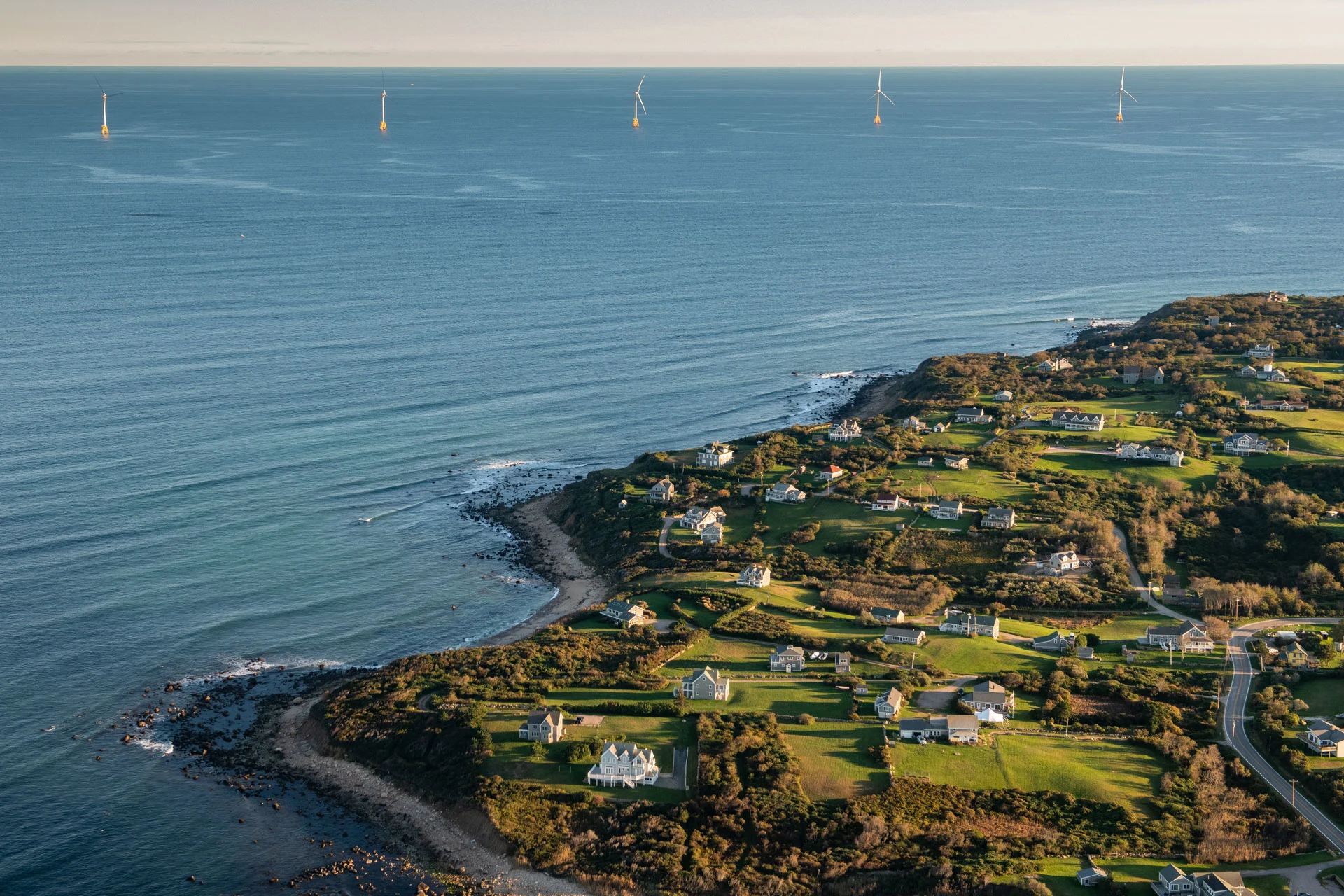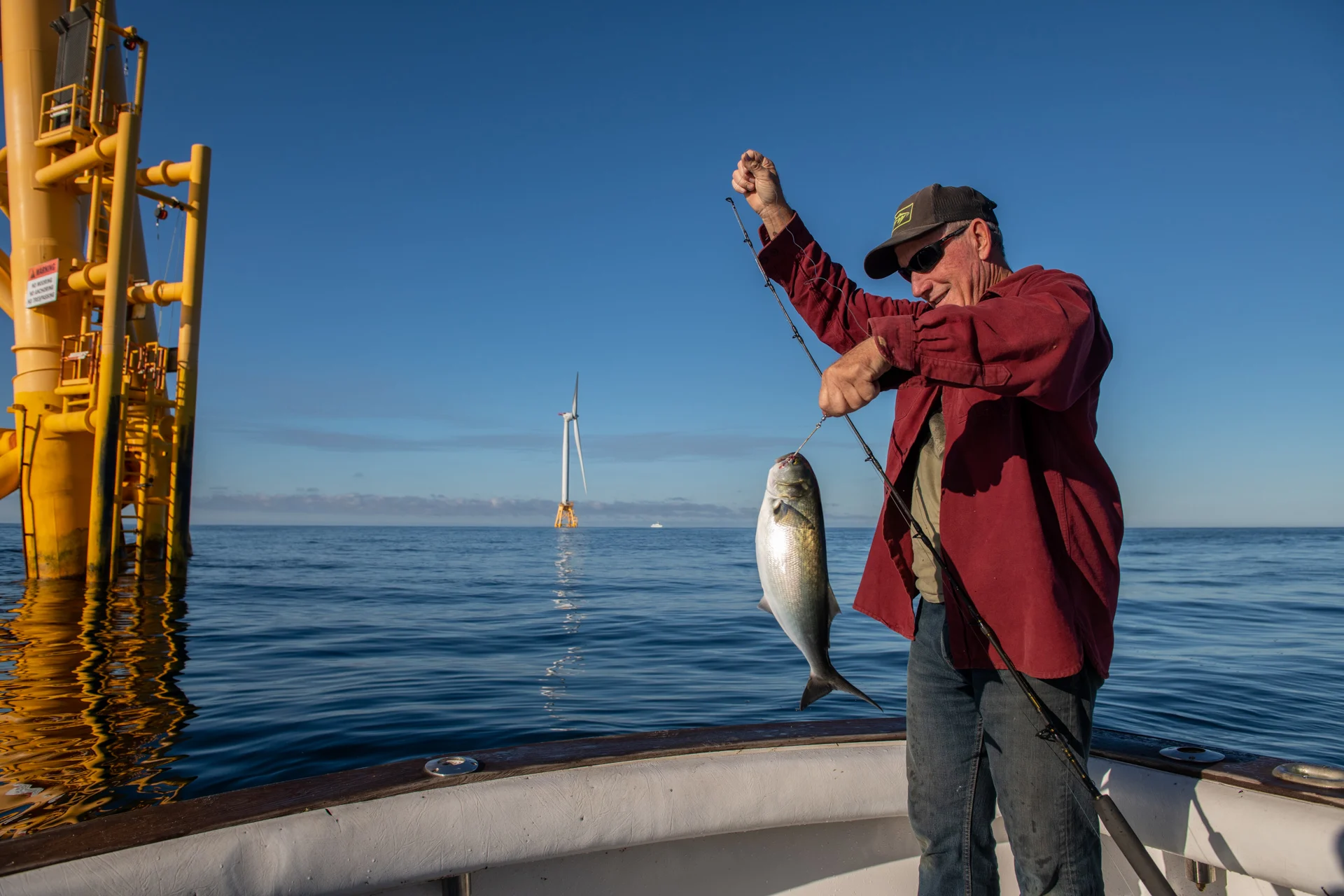
Offshore wind is an untapped power source of the future
The next big opportunity in renewable energy is likely to be in wind power — in the form of wind farms clustered offshore in the ocean.
With the passage of the Inflation Reduction Act, which will see the Biden administration invest $370 billion (U.S.) in climate programs and clean energy, the budding offshore wind sector is poised for huge growth.
The Biden administration has set a goal of producing 30 gigawatts (GW) of offshore wind energy by 2030. The bill, by reducing the cost of building clean energy infrastructure, makes this goal attainable.

Vessel near the Block Island Wind Farm. Block Island Wind Farm is the first commercial offshore wind farm in the U.S., located 3.8 miles (6.1 km) from Block Island, Rhode Island in the Atlantic Ocean. The five-turbine, 30 MW project was developed by Deepwater Wind. Construction began in 2015 and in late summer 2016 five Alstom Haliade 150-6-MW turbines were erected. Operations were launched in December 2016. It is the largest project using wind power in Rhode Island, USA. (Neil Ever Osborne)
There are several U.S. offshore wind projects in development along the Atlantic Coast and in the Gulf of Mexico, and already two major offshore wind farms in operation.
One of these is the Block Island Wind Farm, situated three kilometres off the coast of a beloved Rhode Island vacation spot. The community of Block Island is fully powered by the farm’s five giant turbines, which produce six megawatts (MW) of power each.
(For comparison, the average land-based turbine produces about 2 MW.)
The Block Island project was a venture aimed at opening the door to the host of wind farms sure to follow up and down the coast. As a case study, Block Island has demonstrated the challenges to introducing major infrastructure in the sightlines of wealthy stakeholders.
The project required extensive environmental assessment to determine impacts on marine life, birds, and bats, but perhaps an even bigger obstacle was winning over locals and tourists, whose ocean views are now marred by the almost 100 metre tall structures.
Despite some initial opposition, locals have embraced the wind farm — and seen their electricity costs plummet.

Block Island Wind Farm in the distance is the first commercial offshore wind farm in the U.S., located 3.8 miles (6.1 km) southeast of Block Island in the Atlantic Ocean. (Neil Ever Osborne)
Land-based wind power is far ahead of the offshore sector. The United States generates 139 GW of wind power, only 42 of which is from offshore sources. China, the world leader in wind energy, generates about 90 per cent of its total of 342 GW from land-based wind — a chunk of it from the world’s largest onshore wind farm in the Gobi Desert.
Canada, which ranks ninth in the world in wind power capacity at 14.4 GW, derives none of it from offshore wind farms.
But this is about to change. The federal government has commissioned studies to find suitable locations for offshore wind farms and assess the environmental implications.
Analysts see the Atlantic coast as having vast untapped potential. The U.S. Department of Energy estimates the energy capacity potential to be more than 1,000 GW in U.S. Atlantic waters.

Captain Steve Miller is with a blue fish he caught near the Block Island Wind Farm. Rhode Island, U.S. Miller, a full-time resident of Block Island, joined the United States Coast Guard at age seventeen, fished commercially in his twenties, and held a 100-Ton Master Captain's License from the Coast Guard for several years. (Neil Ever Osborne)
As the industry has continued to develop more efficient turbines, the cost of producing offshore wind electricity has dropped dramatically — and the sector has seen record growth as a result.
China added almost 17 GW of offshore wind capacity in 2021. An auction of nearly 500,000 acres of prime future wind farm locations off the coast of New York drew bids of $4 billion.
The world’s largest offshore wind farm, Hornsea Project Two in the English Channel, will be fully commissioned by the end of the month and produce 1.32 GW. And South Korea is planning to top this with an offshore project in development that is to have 8.82 GW of capacity.
The global research firm Wood MacKenzie has pegged offshore wind to be a “$1 trillion opportunity.”
WATCH BELOW: This simple solution could drastically reduce bird deaths from wind turbines
A sign of the changing times is the rush by the oil industry to get in on the offshore boom. According to the World Economic Forum, “Oil giant Shell joined forces with French utility EDF to secure another auction block” along the U.S. Atlantic coast for offshore wind farm development and BP has plans to develop offshore capacity in the Irish Sea and off the coast of New York and Massachusetts.
It is easy to see why. Although offshore wind projects can cost nearly twice as much as land-based wind farms to build, and despite unique challenges like icebergs, towering waves, and tourists protective of their views, offshore wind power is the untapped resource of the future.
Thumbnail image: Will Fancher, a Rope Access Supervisor, conducts routine maintenance on a turbine blade at the Block Island Wind Farm off the coast of Rhode Island, U.S. (Neil Ever Osborne)











